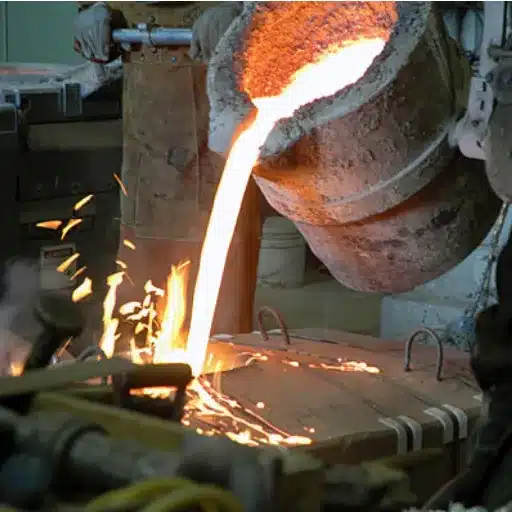Every type of equipment requires a high level of accuracy and seamless durability, which heavily relies on the materials selected. There is no doubt that the automotive and aerospace industries use seamless stainless steel tubing due to its exceptional strength, resistance to corrosion, and sleek finish. But the varying sizes, grades, and specifications offered can be bewildering. In this article, we will be describing important factors one needs to consider while choosing seamless stainless steel tubing pertaining to efficiency and performance. This will enable better, informed decisions. This guide has been designed to thoroughly cater to new and experienced individuals across all professional spectrum, aiming to strengthen their understanding of seamless stainless steel.
What is Seamless Stainless Steel Tubing and How is it Different from Welded Tubing?
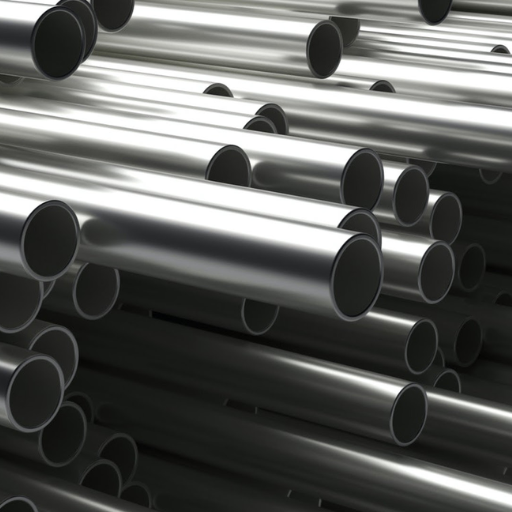
In sharp contrast to welded seams, which are weak points, seamless stainless steel tubing has a distinct advantage: it is more dependable and resistant to pressure due to the absence of a welded seam. Its intricate production process, which includes extrusion and piercing of a solid steel billet, ensures it has a uniform structure.
Welded tubing is often considered a budget option, as it leaves conspicuous seams along its cylinder edge. While deemed more reliable and effective, seamless tubing’s other welded competitors struggle in high-pressure, high-temperature, or critical environments full of challenges.
Definition and Key Characteristics of Seamless Stainless Steel Tubing
Seamless stainless steel tubing is a type of tubing manufactured devoid of a welded seam, giving it exceptional power as well as uniformity. Unlike welded tubing, Seamless tubing possesses superior mechanical properties and resistance to pressure because it undergoes a process that involves extruding a solid steel billet through a die. Some of the characteristics are:
- High Strength and Durability
The tensile strength and mechanical resistance of seamless tubing make it suitable for more demanding uses in aerospace, petrochemical, and power generation industries.
- Superior Corrosion Resistance
The chromium content of stainless steel ensures good protection against rust and corrosion on stainless-steel tubing subjected to harmful chemicals and moisture.
- Temperature and Pressure Tolerance
Seamless tubing is constructed to handle high-pressure and extreme temperature conditions without deforming, cracking, or failing, making it essential for fluid transport systems operating under severe conditions.
- Versatility and Dimensional Accuracy
Seamless tubing has no seams which allow manufactures to achieve accurate requirements, and offers better interference fit. So, seamless tubing can be provided in precision grades along with varying sizes, grades, and finishes to meet different industrial needs.
- Clean and Smooth Internal Surface
Seamless tubing offers a clean and smooth internal surface which is necessary to eliminate the potential clogging that impedes fluid or gas movement. This feature is crucial in pharmaceutical, food, and beverage industries.
There is no denying that seamless stainless steel tubing remains a popular option in applications where longevity, trustworthiness, and precision are critical. Such attributes make it suitable for use in hydraulic and instrumentation systems, medical devices, boilers, heat exchangers, and other systems owing to its superb structural material integrity.
How Seamless Tubing is Made: The Manufacturing Process
The precise manufacturing of seamless stainless steel tubings requires high levels of care and consideration, specifically in areas such as construction, performance, and overall durability. The technique usually begins with a solid cylindrical steel billet, which firstly needs to be over 1000 degrees Celsius in order to undergo the next step of the process. Tools such as a piercing mill or a mandrel allow the solid cylindrical steel billet to be pierced, turning it into a hollow tube. Moreover, during the piercing process, it is crucial that the seamless nature of the tubing is preserved, as there should not be any welded joints or weak points throughout the structure.
Separately from piercing, elongation, and rolling processes are critical in order to achieve the desired wall thickness and diameter of the tubings. Compounding this, the standard edges set on industry norms further tighten the precision rolling machinery’s requirements to achieve uniformity. Additionally, once the tubing has achieved the set standards, a series of other processes, including annealing, need to be done. These processes are crucial in boosting the strength and flexibility of the tubing, and once they are completed, it is safe for the tubing to undergo cooling and straightening to finish the formation stage.
The rigorous material testing, Sequential Hydrostatic Testing, Ultrasonic Inspection, and Dimensional Analysis ensure sound seamless tubing quality, keeping structural integrity, corrosion resistance, and strength mitigation in mind. Many industries, for example, require seamless tubing to comply with tight tolerances and surface finishing requirements. Among the benefits cited, seamless tubes have, on average, 20-30% greater pressure ratings than welded tubing, which greatly enhances their reliability under severe stress conditions.
Seamless Stainless Steel Tubing (SST) serves as an essential aircraft, petrochemical, pharmaceutical, and power-generating industry material, specially designed to withstand critical operations while maintaining rigorous AST and ASME standards.
Comparing Seamless vs Welded Tubing: Structural Differences
A solid billet goes through a piercing process to create a seamless tube, which provides the tubing with superior strength and uniformity as compared to welded tubing. Seamless welded tubes are created by rolling a flat strip of steel and joining the two edges with a weld. Wielding a tubing seam creates potential weak points or areas of deception in resistance to pressure. Without seams, the tubing becomes more resistant to deformation under pressure. In contrast, welded tubing does not provide the same strength as seamless tubing, but does benefit from a more cost-effective production process, making it more appealing for applications that do not require critical strength.
Because they do not require the same maintenance as welded tubing, seamless tubes withstand higher pressures. Studies indicate a seamless tube is capable of withstanding harsher environments. In addition, the precise dimensions of seamless tubes allow for tighter tolerances, an aerospace and power generation industry requirement. Recent data shows the seamless tube can improve durability against mechanical stress by 20-50% compared to a welded tube. Structural changes highlight the need for specific material requirements for certain applications.
What Manufacturing Processes are Used to Produce Seamless Stainless Tubing?
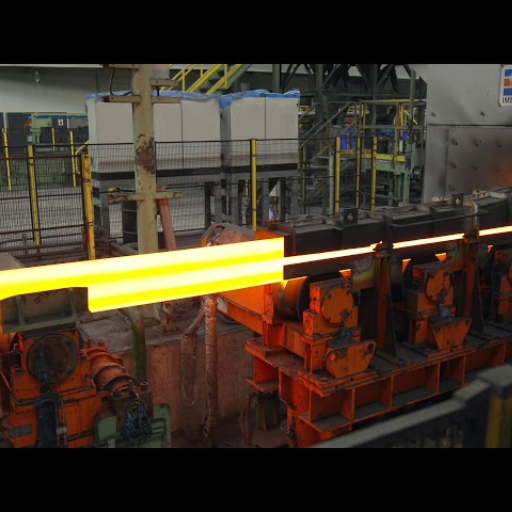
Powered by controlled operations processes to achieve consistency and strength, seamless stainless tubing undergoes numerous steps. The simplest approach starts with a wrought hollow stainless steel cylindrical billet, which goes through a heating phase followed by piercing. This hollow tube is then rotary forged and later extruded. Finally, the tube is cold-drawn or rolled to the distinct limits of the clean surface, roughness, mechanical attributes, shape, and other features of the material. All these processes help achieve the required tubing standard for numerous challenging, international, robust applications.
Extrusion and Mandrel Methods in Seamless Tube Production
The most common techniques for the precision and reliable production of seamless tubes involve the use of extrusion and mandrel methods. In the process of extrusion, a ram or hydraulic press assists in forcing a heated billet through a die, resulting in a seamless tube with uniform cross-sectional dimensions and excellent structural integrity. The extrusion technique is particularly valued for its capacity to create long sections of tubing with consistent properties, which is necessary for the aerospace, automotive, and energy industries.
On the other hand, the mandrel method involves the advancement of a mandrel through the hollow bilateral as the latter is being worked on. This technique allows for more control of the internal diameter and yields higher dimensional accuracy and smoother interior finishes for the tubes. Advances in the technology of the mandrel have improved production speeds, reduced material waste, and sustained the quality of the tubes, making the technique more cost-efficient.
Based on the reports from the relevant markets, seamless tubes made with these techniques can endure high pressure and temperature, which is very important for systems like boilers, oil and gas pipelines, and advanced machinery. These developments, along with combined advances in material science, continue to strengthen the quality and performance attributes of seamless tubes, thus increasing their usage across industries globally.
The Role of Billets in Manufacturing Seamless Stainless Steel Tubing
Billets are a significant building block for seamless stainless steel tubes because they are steel rods, and their strength, durability, and precision depend on their quality. Billets require a certain casing or stainless steel through casting or hot rolling processes, and they should be shaped into uniform ‘cylinders’ suited for seamless tube manufacturing. Advanced production techniques ensure minimal mechanical divisions within a given billet because it has to possess the utmost reliability and strength against corrosion.
The seamless tubing starts with heating the billets to extreme temperatures within the range of 600-2300 Fahrenheit. This permits the necessary alteration without compromising integrity. Further to the altering stage of heating, rotary piercing mills are used to pierce set holes into the tubes. They should further be elongated and refined towards their desired circumference using extrusion or cold drawing methods. Modern production lines suspend themselves from meeting set industry’s sough alignments and up to ±0.1 mm, tailored specifically for aerospace, energy sectors, and healthcare.
Statistical data showcase the increasing importance of billet-based seamless tube production. For example, the worldwide market for seamless tubes is expected to surpass USD 50 billion by 2030, fueled by the increased use of stainless steel in critical infrastructure and construction industries. Billet-produced seamless stainless steel tubes, due to their unique production techniques, help save fuel, enhance safety, and improve the longevity of complex systems across the globe.
Annealing and Finishing Processes for Seamless Tubes
The aim of the seamless tube production process is to increase ductility, decrease internal stresses, and refine microstructure, which can be done using the seamless tube’s critical heat treatment process: annealing. During the process, a seamless tube is heated to a certain temperature, held there for a determined amount of time, and then cooled in a controlled manner. The seamless tubes undergo recrystallization of the grain structure, which ensures they have durability and machinability for high-performance applications.
Inspections are done on unmatched measurement seamless tubes also undergo final treatments like surface polishing, coating, and dimensional polishing, which enhances the quality of the seamless tubes. Corrosion is one of the most imperative factors needed from the chemical processing industry, as well as oil and gas, and precision polishing provides that in addition to surface smoothing. Data indicates that polished seamless stainless steel tubes can extend product life by up to 30% compared to untreated alternatives. In order to provide the unmatched performance, the tubes need to guarantee a level of endurance for prolonged periods. advanced hori-tech finishing techniques, such as electroplating, provide other resilience, which strengthens the tubes against extreme operating conditions.
All these elements combined showcase the annealing and finishing processes as critical steps in ensuring the unmatched quality and reliability needed by the construction, aerospace, and energy sectors.
What Are the Advantages of Seamless Stainless Steel Tubing Over Welded Options?
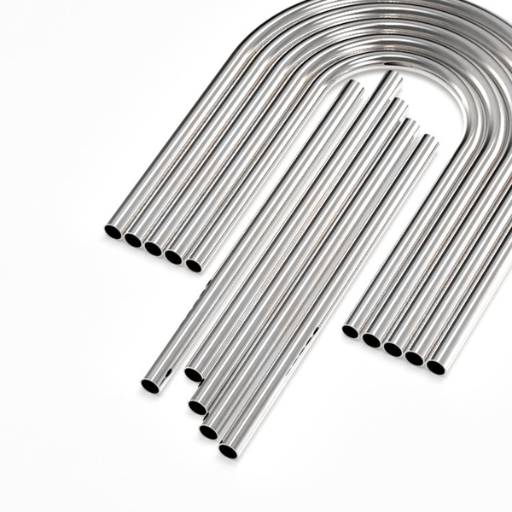
Seamless tubing does not contain welds, which presents it with a variety of advantages over welded tubing:
- Strength and Durability: For seamless stainless steel tubing, strength is a given. Its a single piece construction means it does not have any welded seams which are weak under stress.
- Enhanced Corrosion Resistance: Seamless variety is better option in choosen harsher environments because lack of welds makes for fewer areas susceptible to corrosion.
- Superior Pressure Handling: Seamless tubing can tolerate higher levels of internal pressure due to its uniform structure.
- Improved Aesthetics and Finish: Compared to welded tubing, it tends to have a less rough surface and is not pitted, giving it a more finished look.
- Versatility: Seamless offers greater reliability in critical fields such as aerospace, chemical processing, and high-pressure systems тези fields as compared to their welded counterparts.
Because of the demanding applications that require high accuracy and precision, seamless stainless steel tubings are the preferred choice.
Superior Mechanical Properties and Pressure Resistance
Seamless stainless steel tubing is always preferred when it comes to high strength applications due to its remarkable mechanical properties. Its lack of weld seams increases its tensile strength, allowing it to withstand higher pressures and more extreme operating conditions. For example, most seamless stainless steel tubing can withstand pressures of more than 10,000 psi, depending on the alloy and wall thickness, making it perfect for industries like oil and gas, aerospace, and chemical processing plants.
Moreover, the uniform structure of the seamless tubing greatly increases its fracture resistance due to deformation under stress. Test data reveals that seamless tubing has greater endurance against cyclic loading, making it less likely to fail in high-pressure or high-vibration environments. The seamless manufacturing process guarantees uniform wall thickness, which maximizes the ability to withstand stress while maintaining structural stability over time.
Seamless stainless steel tubing has become a robust and effective solution for modern industrial needs indulge in utmost performance and safety without any of these mechanical disadvantages.
Enhanced Corrosion Resistance in Critical Applications
Seamless stainless steel tubing grade 316 and 316L have an increased resistance to known chloride stress corrosion cracking, frequently occurring in the desalination and offshore oil industries. Other industries have also noted the changed resistance corrosion capabilities from recent data correlated to changes in alloy compositions through the addition of molybdenum and nitrogen. These changes reinforce the materials to withstand prolonged critical applications. Oil and gas, aerospace, and medical equipment industries requiring uncompromised performance tend to rely on seamless stainless steel tubing due to its consistent structural integrity over time.
Seamless stainless steels are indispensable in processes that involve chemicals, moisture, or extremely high/low temperatures due to the unrivaled corrosion resistance they provide. The reason stainless steel is able to resist oxidation, pitting corrosion, and have an enduring life in harsh environments such as marine and chemical processing plants is because of its high chromium content, surpassing 10.5%, allowing the passive oxide layer to be formed.
Stainless steel alloys show enhanced performance when exposed to extreme conditions, giving them exceptional protection without the risk of damage. Further alteration would optimally improve pitting corrosion and oxidation resistance as well.
Uniform Wall Thickness and Structural Integrity Benefits
In my opinion, the geometry of seamless stainless steel tubing aids in providing a uniform wall thickness, which ensures that the strength and durability are uniformly distributed throughout the material, thus preventing the existence of any weak points that could drastically harm and threaten structural integrity. This allows for it to be extremely reliable under harsh and extreme pressures as well as constantly changing conditions, which is extremely critical for applications where safety and performance are of top priority.
What ASTM Specifications Apply to Seamless Stainless Steel Tubing?
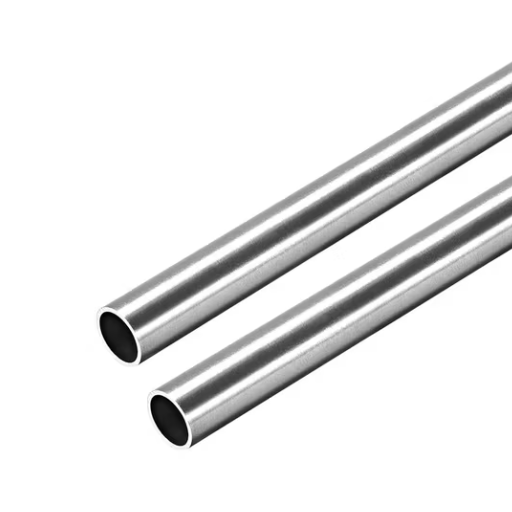
These are the common ASTM standards for seamless stainless steel tubing:
- ASTM A213: Includes ferritic and austenitic alloy steel seamless tubing for high-temperature applications, including boilers and heat exchangers.
- ASTM A269: Covers both welded and seamless tubes of austenitic stainless steel used in applications requiring general corrosion resistance.
- ASTM A312: Covers seamless and welded pipes of stainless steel used for high-temperature and general services.
- ASTM A511: Covers stainless steel seamless tubes for structural and mechanical purposes.
- ASTM A554: Covers welded and seamless tubes of stainless steel used for structural purposes.
These standards highlight vital features, including but not limited to chemical composition, mechanical properties, dimensions, and tests that ensure the part functions and is dependable in a specific region of application.
Common ASTM Standards for Seamless Stainless Steel Tubes
ASTM A213
This standard covers the scope of seamless tubes of ferritic and austenitic alloy steel for Boilers, Superheaters, and Heat Exchangers. The specification includes construction limits of working conditions and temperatures for different grades. For example, T91 tubes are excellent for heat resistance as they can structurally withstand up to 1100°F (593 °C). Moreover, ASTM A213 specifies maximum and minimum bounds on the chemical composition of chromium (1%-11%) and molybdenum (maximum 0.44%).
ASTM A511
ASTM A511 covers the scope of mechanical and structural works involving seamless stainless-steel tubes. Supports many grades, including but not limited to 304 and 316 Stainless Steel. Tubes described in this standard are characterized by uniform wall thickness and smooth finish. Strength and resistance to corrosion make engineers choose A511 for use in critical components of automotive, industrial equipment, and other systems. Under this standard, dimensional tolerances are very accurate to allow for the precise determination of assembly interfits.
ASTM A554
Structural applications require welded and seamless stainless steel tubing as outlined in ASTM A554, which focuses on beauty and strength. Such tubes are used in constructions like railings and ornamental pieces for buildings. The standard defines several mechanical properties of grade 304 and 316 steel which include minimum yield and tensile strength and is fortified with corrosion resistant materials for external or damp surroundings. Polishing and finishing for aesthetic value are also defined in ASTM A554 and include brushed and mirror finishes.
These standards are critical to aid in material choice and performance uniformity across industries. Choosing the appropriate ASTM specification guarantees safety, lifespan, and optimal resource expenditure in manufacturing and building initiatives, as is required by modern industrial needs.
Diameter and Wall Thickness Specifications
The diameter of tubing, as well as its wall thickness, significantly determines the mechanical properties, stainless steel alloys’ durability, and usefulness in different applications. Tubes that conform to ASTM A554 standards have their diameters set within the bounds of 0.5 inches (12.7 mm) and 8 inches (203.2 mm), which covers a broad range of design requirements and adds to versatility. With regard to the wall thickness, values between 0.02 inches (0.5 mm) and 0.12 inches (3.0 mm) appear to add to the strength and weight of the tube.
Generally, for construction-type works, the walls are thicker to improve resistance to pressure and other mechanical stresses. For other architectural and decorative projects where weight and ease of fabrication are more important than structural strength, thinner walls are preferred. Also, advanced manufacturing processes guarantee a high degree of accuracy for these tolerances, which are normally accepted as ±0.01 inches (±0.25 mm) relative to the diameter of the tube. Such ASTM-compliant precision tubing is regarded as dependable for rigorous industrial and engineering tasks because of consistent outcomes and dependable accuracy.
What Industries and Applications Use Seamless Stainless Steel Tubing?
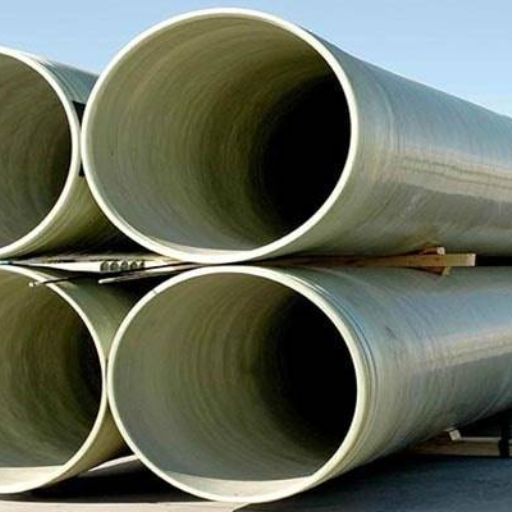
Various industries utilize seamless stainless steel tubing due to its precision craftsmanship, ability to withstand corrosive elements, and overall strength. This includes:
- Aerospace: Hydraulic systems, fuel lines, and structural components.
- Medical: Surgical instruments, diagnostic equipment, and medical-grade implants.
- Oil and Gas: Tubing in high-pressure systems, drilling, as well as fluid transportation.
- Food and Beverage: Transport and processing of liquids while maintaining sanitary standards.
- Automotive: Shown primarily in the exhaust systems and other challenging components of the engine.
Because of its dependability and versatility, it is perfect for specialized and high-performance uses in these domains.
Aerospace and High-Pressure Applications
The qualities of stainless steel relative to strength, endurance, corrosion resistance, and endurance to harsh conditions make it invaluable in aerospace, as well as other high-pressure, high-impact fields. Here is some important information and statistics encompassing its use in these industries:
- Jet Engines: Fuselage features, landing gear and wing frames are often constructed in stainless steel alloys to minimize weight while sustaining adequate strength levels.
- Spacecraft Components: Stainless steel’s non-reactive property makes it ideal for handling cryogenic fuels and oxidizers critical to rocket engines.
- High-Pressure Hydraulic Systems: Turbine blades, fasteners, and combustion chambers are often fabricated in stainless steel, a crucial material that can withstand relentless pressures of more than 1,000°F (537°C).
- Rocket Propulsion Systems: Fuel tanks and shielding components rely on stainless steel because its light weight and high strength can withstand radiation and vacuum-induced stresses.
- Aircraft Structural Parts: Stainless steel performs exceptionally well at safely sustaining systems under high operational pressures of 60,000 psi, seen in both industrial and aerospace machines.
The aerospace and hi-tech industries, as well as the stainless steel industry, are marked by stiff competition and constant sibling rivalry. Studying the uses of stainless steel in thermal resistance, strength against any given conditions, and its uses in radiation and high levels of pressure afloat amply demonstrates why it forms the basis and backbone of such industries.
Instrumentation and Critical Process Systems
Because of its high durability, capability to endure extreame temperatures, and resist corrosion, stainless steel is best utilized in instrumentation and critical systems. It is emphasizesed in oil and gas, pharmaceuticals, and food processing industries owing to precise and reliable results.
Corrosion Resistance and Hygiene
When it comes to aggressive chemical exposure and moisture, stainless steel’s resistance to corrosion guarantees performance over time, with no degradation. For instance, 316-grade stainless steel, which has molybdenum added, is used extensively in the pharmaceutical and food industries because hygiene and chemical stability are of utmost importance. Its non-porous surface allows easy cleaning and sanitizing, making stainless steel compliant with stringent regulatory requirements.
Temperature and Pressure Tolerance
High temperatures and critical pressures of various processes present some of the most stressful operating conditions encountered. Stainless steel parts like valves, reactor vessels, and piping is configured to offer dependability in circumferential stresses and high static temperatures where failure of functioning parts could mean loss of valuable time and unsafe conditions.
Data Highlighting Stainless Steel Performance
- Global Consumption: The instrumentation branch greatly supports the request for stainless steel due to its pipes, which in other industries form more than 3 million tons of stainless steel annually.
- Resistance Levels: A commercially pure AISI 316 stainless steel has a resistance limit of 1600° F/871°C, which also provides structural integrity around it, therefore providing space for it to be used in petrochemical applications.
- Lifespan: Systems of stainless steel can be maintained for decades, making maintenance highly cost-effective.
The combination of mechanical strength, chemical resistance, and adaptability to strict hygiene environments makes stainless steel the ideal metal for instruments and critical processes in multiple industries.
Many Applications Where Structural Integrity is Paramount
Thanks to the advancement of manufacturing technologies, stainless steel is continually proving its immeasurable worth in applications that require unparalleled structural integrity. Its uses range from construction, automotive, aerospace, and healthcare because of its ability to withstand tensile and corrosive forces. For example, modern infrastructure like skyscrapers and bridges uses stainless steel in their frameworks because it can take enormous loads and endure harsh environmental wear and tear without compromising safety.
It is noted in research that about 60% of global stainless steel production is used in architecture and construction, which showcases the material’s importance in urban infrastructure. Also, in the aerospace sector, stainless steel parts provide aircraft reliability for high-pressure and high-temperature conditions, elongating the aircraft’s lifespan and increasing safety measures. The medical industry has also adopted the material’s biocompatible property, which allows for the production of surgical tools, implants, and hospital equipment that are guaranteed to uphold rigorous durability as well as sterilization standards.
These examples highlight stainless steel’s importance in services that require strength, resilience, and assurance while preserving its reputation as a linchpin in various industries.
How to Choose Between Seamless and Welded Stainless Steel Tubing?
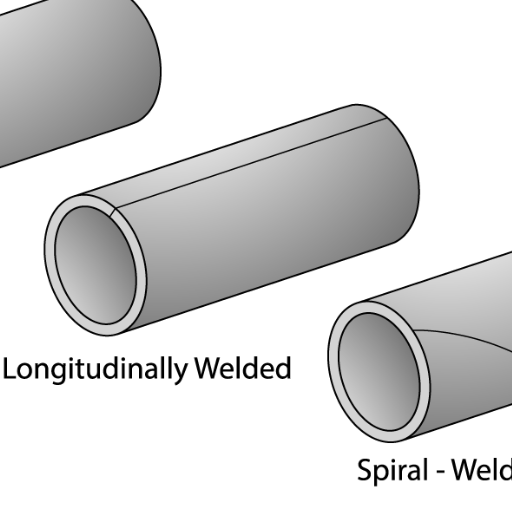
The best option between seamless and welded stainless steel tubing relies on the ultimate use:
- Seamless Tubing is an excellent option for extremely high-pressure environments and for oncology applications for vessel strength, along with resistance to wear and tear. Being devoid of seams makes it smoother and strengthens its durability.
-
Welded Tubing is best applicable for low pressure applications where budget is the foremost factor. Due to the technique of making a weld on a strip of steel to form a tubular shape, it is available in greater quantity and at a lower price than seamless tubing.
Carefully balance the required strength, cost, and particular environmental factors to make the optimal choice.
When to Use Seamless Tubing: Critical Factors to Consider
Seamless tubing gives the best performance when high pressure, operability, reliability, and safety are of utmost importance. It can endure severe levels of stress and pressure due to its uniform structure without any welds. Seamless tubing is highly preferred in critical operations across the oil and gas, aerospace, and automotive industries. For example, in drilling operations where high levels of 15,000 psi are common, seamless pipes of extraordinary strength are a necessity.
Furthermore, seamless tubing does wonders in volatile temperatures. Its robust design eliminates weak points typical of welded counterparts, allowing it to excel during thermal cycling scenarios. Seamless stainless steel tubing, for instance, is commonly used in heat exchanger systems because its ability to withstand extreme temperatures enables it to be less corrosion-prone, thereby increasing the lifespan of the system while decreasing maintenance needs.
Seamless tubing is preferred over welded alternatives when increasing dimensional accuracy. It provides tighter tolerances, which are especially useful in measuring systems of hydraulic or other instrumentation systems. Measurement precision is crucial for these systems to function properly.
Cost vs Performance Analysis of Seamless vs Welded Options
The analysis on cost seams vs welded tubing takes into consideration material and manufactruing costs as well as ver time performance of the tool.
In comparison to welded tubing, seamless tubing may have a higher upfront cost due to its production process as it needs to be extruded to produce a tube free from weld seams. For this reason, the uniform nature of seamless tubes make them better suited for high-pressure applications, however, it does mean higher production costs. Additionally, seamless tubing is better able to withstand stress points that cause structural weaknesses often found in welded tubing.
Applications that do not depend on ultra-high-pressure tolerance or exacting precision will benefit from the lower cost of welded tubing. Because the welding process of joining sheets of metal requires less work, it is quicker and cheaper to produce. Though modern welding has made significant advances, welded pipes are still more susceptible to weld seam corrosion or failure in harboring hostile environments.
According to the performance data, seamless tubes are more suited to the aerospace, energy, and chemical industries where maximum strength and accuracy are a must. For example, seamless tubing in a high-pressure hydraulic system is better able to manage the pressure fluctuations over time, which leads to fewer downtimes and maintenance costs in the long term. On the other hand, welded tubing does find acceptance in construction, general piping systems, and low-pressure applications where greater emphasis is placed on cost rather than extreme durability.
Seamless tubes justify their higher upfront cost for critical industries, as recent research shows that seamless tubes have a failure rate 20-30% lower than welded tubes in high stress scenarios. Nonetheless, for applications with less stringent safety criteria, welded tubes provide good, cost-effective functionality. The division reimbursable and capped cost approaches should be achieved for optimum value in the short and long-term operational needs. This division needs further evaluation to ascertain the optimal value for specific operational requirements.
Matching Alloy Types to Application Requirements
Choosing the proper alloy type for a terminal application is vital in accomplishing peak performance, longevity, and cost efficiency. The table below gives a detailed description of the other common alloy types and to what extent they are used, including important characteristics and usage information:
- Stainless Steel (300 Series)
-
- Key Attributes: Corrosion resistance, forming and welding capabilities, superior strength at elevated temperatures.
- Applications: Components for automobiles, food processing equipment, chemical storage tanks, and more.
- Data: Comprising roughly half of the world’s stainless steel uses, with 304 and 316 grades being the most popular.
- Nickel-Based Alloys
-
- Key Attributes: Remarkable resistance to high temperature, oxidation, and corrosion. other alloys in extreme environments.
- Applications: Used in aerospace, gas turbines, and heat exchangers.
- Data: Anticipated to increase globally by 4.5% CAGR due to defense and energy sector demand.
- Aluminum Alloys
-
- Key Attributes: Light in Weight, Good Conductors, Resists Corrosion Effectively.
- Applications: Vehicles, planes, packaging materials, and power transmission systems.
- Data: Accounts for approximately 25% of the materials used in manufacturing modern aircraft.
- Titanium Alloys
-
- Key Attributes: Very light compared to the strength they provide, Does Not Corrode Easily, has high durability in marine and aerospace environments.
- Applications: Surgical devices, submarine hulls, and jet engines.
- Data: Gaining popularity in biomedical fields at a rate of 7% per year.
- Carbon Steel
-
- Key Attributes: It has high strength, low cost, and versatile utility.
- Applications: Includes structural beams, automotive frames, and even pipelines.
- Data: Contributes to about 90% of the total steel production, with grades of low to high carbon.
- Copper Alloys
-
- Key Attributes: Outstanding electrical and thermal conductivity combined with antifouling abilities.
- Applications: Used in electrical wiring, plumbing, and heat exchangers.
- Data: Approx 70% of the copper in the world is utilized in wiring systems.
By alloy types and application requirements, we mean the discipline of alloy is determined by factors such as operating environment, load conditions, and expected performance quality over time.
Reference Sources
- Manufacture of Seamless Stainless Steel Tubings and Related Equipment1:
- Focuses on the production of seamless tubes for specialized applications, particularly in nuclear power reactors.
- Discusses the use of hot extrusion presses and cold pilger mills, along with advancements like vertical piercing presses and induction furnaces.
- While insightful, this study is from 1997 and does not fall within the last five years.
- A Knowledge-Based System for Process Planning in a Seamless Steel Tube Plant2:
- A PhD thesis from 1990 that developed a knowledge-based system for process planning in seamless tube manufacturing.
- Highlights the rotary piercing process and fixed plug cold drawing for tube production.
- While methodologically rich, it is not recent.
- Australia’s Sole Manufacturer of Stainless Steel Tubing3:
- This document appears to be a preview and lacks detailed content. It references manufacturing processes but is dated and inaccessible for full review.
- Manufacturing and Testing of Welded Stainless Steel Tubing 4:
- Discusses options for manufacturing and testing stainless steel tubing, focusing on welding, cold working, and heat treating.
- Provides insights into ASTM specifications and their limitations for critical applications.
- Published in 2006, it is also outside the requested timeframe.
Frequently Asked Questions (FAQs)
Q: What are the main differences between welded vs seamless stainless steel pipe?
A: The primary difference is in the manufacturing process and resulting structural integrity. Seamless stainless steel tubes are produced from a solid billet without any longitudinal seam, offering superior pressure resistance and structural uniformity. Welded tubing, on the other hand, is formed from a steel coil that is shaped into a cylinder and joined with a weld bead. Seamless tubes generally offer higher pressure ratings, better corrosion resistance, and greater reliability in extreme conditions, though they typically cost more than welded alternatives. The choice between welded or seamless tubing ultimately depends on your specific application requirements, pressure ratings, and budget considerations.
Q: How is stainless steel seamless tube manufactured?
A: The manufacturing of seamless tubing involves several sophisticated processes. It begins with heating a solid steel billet to high temperatures until malleable. The hot billet then undergoes perforation to create a hollow shell, followed by elongation processes such as pilgering, where the tube is repeatedly passed over a mandrel to reduce wall thickness and increase length. Additional methods include cold rolling and forging methods that further refine the dimensions and material properties. Unlike welded tubes, which form stainless steel into a tube from flat steel coil, the seamless process maintains material continuity throughout the entire circumference, eliminating the potential weak points that can occur along weld seams.
Q: What are the different types of stainless steel tubing available for manufacturing processes?
A: There are numerous types of stainless steel tubing available, categorized by both manufacturing method and alloy composition. From a manufacturing perspective, you can choose between seamless stainless steel coil tubing and welded varieties. From a material standpoint, different types of stainless steel include austenitic (300 series like 304, 316L), ferritic (400 series), duplex, and precipitation-hardening grades. Each type offers specific advantages for different environments: 316L provides exceptional corrosion resistance for marine applications, 304 offers good general-purpose properties, while duplex grades provide superior strength. Your selection should be based on factors like corrosion environment, temperature requirements, mechanical stress, and regulatory compliance specific to your manufacturing process.
Q: What is the advantage of seamless tubing compared to welded options?
A: The primary advantage of seamless tubing is its superior structural integrity. Without a longitudinal weld seam, these tubes offer uniform strength distribution and eliminate the risk of weld failures. This makes seamless tubes ideal for high-pressure applications, corrosive environments, and critical safety systems where failure isn’t an option. Additional benefits include better fatigue resistance, higher pressure ratings, superior performance under thermal cycling, and enhanced bendability without the risk of weld seam failures. While seamless options typically command a premium price over welded alternatives, the enhanced reliability and extended service life often make them more cost-effective long-term, particularly in demanding manufacturing processes where system downtime can be extremely costly.
Q: How do I select the right outside diameter for seamless stainless steel pipe in my application?
A: Selecting the correct outside diameter tubing requires careful consideration of several factors. First, determine the flow rate requirements of your system, as the diameter directly impacts flow capacity. Consider the installation space constraints and connection compatibility with existing components. Pressure requirements are also crucial—smaller diameter tubes with thicker walls may be needed for high-pressure applications. Temperature fluctuations should be accounted for as they cause expansion and contraction. Industry standards and codes often specify minimum and maximum diameter requirements for specific applications. For precision manufacturing, tight tolerance requirements may narrow your options. Finally, cost considerations may influence your decision, as larger diameter seamless tubing generally comes at a higher price point. Consulting with a specialized supplier can help identify the optimal diameter for your specific manufacturing process.
Q: How is cold forming used in the production of high-quality tubing?
A: Cold forming is an essential process in producing high-quality stainless steel seamless tubes. This technique involves shaping metal at room temperature, below its recrystallization point. In tubing production, cold forming typically follows initial hot working processes and includes methods such as cold drawing, cold pilgering, and cold rolling. These processes progressively reduce the tube’s diameter and wall thickness while significantly improving mechanical properties. Cold forming increases tensile strength, yield strength, and hardness while enhancing surface finish and dimensional precision. It also improves grain structure, resulting in superior mechanical properties and greater resistance to corrosion. For manufacturing applications requiring tight tolerances, exceptional surface finish, and enhanced mechanical properties, cold-formed seamless tubing offers distinct advantages over hot-formed alternatives.
Q: What specifications should I consider when selecting seamless stainless steel coil tubing?
A: When selecting seamless stainless steel coil tubing, several critical specifications require consideration. First, identify the appropriate alloy grade (304, 316L, etc.) based on corrosion resistance needs and operating environment. Dimensional specifications, including outside diameter, wall thickness, and length tolerance, must match your application requirements. Mechanical properties such as tensile strength, yield strength, elongation, and hardness need to align with operational stresses. Surface finish requirements (bright annealed, pickled, etc.) are important for both functional and aesthetic reasons. Consider pressure ratings, temperature limits, and any specialized testing certifications needed. Manufacturing standards compliance (ASTM, ASME, etc.) ensures quality and interchangeability. Finally, cost considerations and delivery schedules may influence your final selection. Consulting with specialized suppliers can help navigate these specifications to ensure the selected tubing meets all your manufacturing requirements.
Q: How do I determine if my application requires seamless or welded stainless steel tubing?
A: Determining whether your application requires seamless or welded tubing depends on several key factors. Consider the operating pressure—seamless tubing generally offers superior pressure resistance without the potential weak point of a longitudinal weld. Evaluate the consequences of failure; critical safety applications often warrant seamless construction. Assess the corrosion environment, as seamless tubes eliminate the risk of preferential corrosion along weld lines. Consider thermal cycling requirements, as seamless options typically handle temperature fluctuations better. Bending and forming needs may favor seamless tubing, which maintains uniform properties during fabrication. Budget constraints matter too, as welded options typically cost less. Finally, regulatory requirements in certain industries may specifically mandate seamless tubing. The optimal choice balances these considerations against the specific demands of your manufacturing process.
Q: What quality testing is performed to ensure high-quality seamless stainless steel tubing?
A: High-quality seamless stainless steel tubing undergoes rigorous testing throughout the manufacturing process. Non-destructive testing methods include ultrasonic testing to detect internal flaws, eddy current testing for surface imperfections, and hydrostatic testing to verify pressure resistance. Destructive testing on sample pieces includes tensile testing for strength properties, flattening and flaring tests to assess formability, and metallographic examination to evaluate microstructure. Chemical analysis ensures the material meets composition requirements. Dimensional inspection verifies adherence to size tolerances for outside diameter and wall thickness. Surface quality assessment checks for defects, and positive material identification confirms the alloy grade. Many manufacturers also perform specialized tests like intergranular corrosion testing or pitting resistance evaluation. These comprehensive quality assurance measures ensure the final product meets all specifications and will perform reliably in demanding manufacturing environments.
Q: How does the cost of seamless stainless steel tubing compare to welded alternatives?
A: Seamless stainless steel tubing typically commands a premium of 15-40% over welded alternatives, with the price difference varying based on diameter, wall thickness, and alloy grade. This higher cost stems from the more complex manufacturing process, which requires specialized equipment like extrusion presses and pilgering mills, consumes more energy, and produces more material waste. However, the total cost of ownership often favors seamless tubing for critical applications. The enhanced reliability translates to fewer failures, reduced downtime, lower maintenance costs, and extended service life. For high-pressure applications, seamless tubing may allow for thinner walls than welded alternatives while maintaining the same pressure rating, potentially offsetting some cost differences. When evaluating cost-effectiveness, consider not just the initial purchase price but the entire lifecycle cost within your specific manufacturing context.

